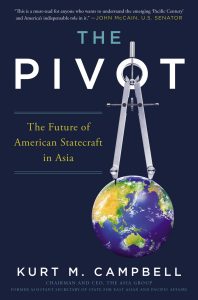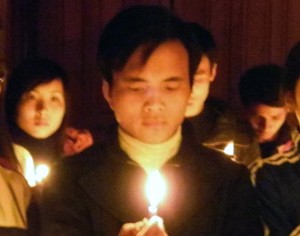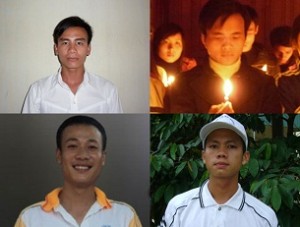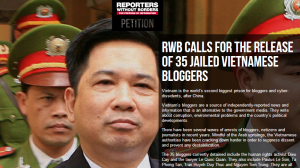
Washington Post, Aug 5, 2016
Keith B. Richburg, a professor of journalism at the University of Hong Kong, was The Washington Post’s bureau chief in China, Hong Kong and Southeast Asia and is the author of “Out Of America: A Black Man Confronts Africa.”
Barack Obama, born in Hawaii and partly reared in Indonesia, styled himself “America’s first Pacific president.” He was elected on a promise to extricate the United States from the seemingly intractable wars of the Middle East and to shift the country’s attention to the prosperous Asian region, with its dynamic economies and the world’s fastest-growing middle class.
The refocus to Asia, first outlined by Hillary Clinton as secretary of state in a widely circulated 2011 Foreign Policy article, gave the new policy its shorthanded name, “the pivot.” Kurt Campbell, who served as Clinton’s assistant secretary of state for Asia, is as much as anyone the architect of the rebalancing.
Campbell’s new book, “The Pivot,” is understandably defensive about both the policy and Clinton’s role in implementing it. At times, that makes this very readable policy book seem too safe and unchallenging, as if Campbell is laying out his vision for the secretary of state’s job if Clinton wins the election.
Campbell concedes early on that “the Pivot is a work in progress” and that “the unrelenting demands of the Middle East place claims on finite American resources.” But that is about as far as he goes in acknowledging that despite Obama and Clinton’s best intentions, other global trouble spots continue to dominate the administration’s attention. The Asia pivot remains one of Obama’s unfinished legacies.
The book is best when Campbell provides personal anecdotes from his travels around Asia — such as his last trip aboard Air Force One during a presidential visit to Burma. Campbell recounts stuffing his pockets full of plane memorabilia and then breaking into a nervous sweat as he was chased down a tarmac by Secret Service agents he thought were after his purloined loot, when in fact they only wanted to tell him that Obama had requested he ride along in the presidential limousine. Also valuable — but far too infrequent — are his insider’s accounts of the fascinating dynamic between erstwhile rivals Obama and Clinton. Glaringly absent are any real insights into the various Asian leaders he met during his many travels.
This book at times feels like a foreign policy treatise that has been overtaken by recent events. For example, Campbell talks about the importance of strategic partnerships with countries such as the Philippines — but new Philippine President Rodrigo Duterte, an ardent nationalist, wants warmer ties with Beijing and has spoken disparagingly about the U.S.-Philippine alliance. Campbell also rightly calls the Trans-Pacific Partnership trade deal a cornerstone of the U.S. rebalancing to Asia, but he ignores how Clinton has adopted a new anti-TPP tone in response to Sen. Bernie Sanders (Vt.) pushing her to the left on trade issues in the Democratic primaries.
A less-cautious approach might also have laid out more starkly the challenge from China and the prospect that Beijing’s leaders may not want a more cooperative relationship with Washington. Instead Campbell falls back on safe bromides, like the need to “set the contours for China’s rise,” and overcoming strategic mistrust with such things as joint space exploration and “more affirmative and cooperative dialogues.”
This is no “tell all” by a former high-ranking official but a studious, policy-oriented book, designed not to challenge conventional wisdom or offend, all while showcasing the author’s considerable expertise in Asian history and contemporary politics. If Clinton wins the White House, this might also be the blueprint for how she intends to complete one part of Obama’s unfinished business.
Height Insoles: Hi, I do believe this is an excellent site. I stumbledupon …
http://fishinglovers.net: Appreciate you sharing, great post.Thanks Again. Keep writi…
Achilles Pain causes: Every weekend i used to pay a quick visit this site, as i w…






August 8, 2016
A glimpse into Asia policy of a Clinton White House?
by Nhan Quyen • [Human Rights]
Washington Post, Aug 5, 2016
Keith B. Richburg, a professor of journalism at the University of Hong Kong, was The Washington Post’s bureau chief in China, Hong Kong and Southeast Asia and is the author of “Out Of America: A Black Man Confronts Africa.”
Barack Obama, born in Hawaii and partly reared in Indonesia, styled himself “America’s first Pacific president.” He was elected on a promise to extricate the United States from the seemingly intractable wars of the Middle East and to shift the country’s attention to the prosperous Asian region, with its dynamic economies and the world’s fastest-growing middle class.
The refocus to Asia, first outlined by Hillary Clinton as secretary of state in a widely circulated 2011 Foreign Policy article, gave the new policy its shorthanded name, “the pivot.” Kurt Campbell, who served as Clinton’s assistant secretary of state for Asia, is as much as anyone the architect of the rebalancing.
Campbell’s new book, “The Pivot,” is understandably defensive about both the policy and Clinton’s role in implementing it. At times, that makes this very readable policy book seem too safe and unchallenging, as if Campbell is laying out his vision for the secretary of state’s job if Clinton wins the election.
Campbell concedes early on that “the Pivot is a work in progress” and that “the unrelenting demands of the Middle East place claims on finite American resources.” But that is about as far as he goes in acknowledging that despite Obama and Clinton’s best intentions, other global trouble spots continue to dominate the administration’s attention. The Asia pivot remains one of Obama’s unfinished legacies.
The book is best when Campbell provides personal anecdotes from his travels around Asia — such as his last trip aboard Air Force One during a presidential visit to Burma. Campbell recounts stuffing his pockets full of plane memorabilia and then breaking into a nervous sweat as he was chased down a tarmac by Secret Service agents he thought were after his purloined loot, when in fact they only wanted to tell him that Obama had requested he ride along in the presidential limousine. Also valuable — but far too infrequent — are his insider’s accounts of the fascinating dynamic between erstwhile rivals Obama and Clinton. Glaringly absent are any real insights into the various Asian leaders he met during his many travels.
This book at times feels like a foreign policy treatise that has been overtaken by recent events. For example, Campbell talks about the importance of strategic partnerships with countries such as the Philippines — but new Philippine President Rodrigo Duterte, an ardent nationalist, wants warmer ties with Beijing and has spoken disparagingly about the U.S.-Philippine alliance. Campbell also rightly calls the Trans-Pacific Partnership trade deal a cornerstone of the U.S. rebalancing to Asia, but he ignores how Clinton has adopted a new anti-TPP tone in response to Sen. Bernie Sanders (Vt.) pushing her to the left on trade issues in the Democratic primaries.
A less-cautious approach might also have laid out more starkly the challenge from China and the prospect that Beijing’s leaders may not want a more cooperative relationship with Washington. Instead Campbell falls back on safe bromides, like the need to “set the contours for China’s rise,” and overcoming strategic mistrust with such things as joint space exploration and “more affirmative and cooperative dialogues.”
This is no “tell all” by a former high-ranking official but a studious, policy-oriented book, designed not to challenge conventional wisdom or offend, all while showcasing the author’s considerable expertise in Asian history and contemporary politics. If Clinton wins the White House, this might also be the blueprint for how she intends to complete one part of Obama’s unfinished business.